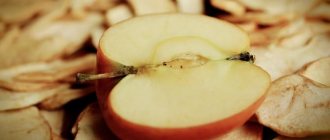Features of the flowering period
In winter, hippeastrums begin their flowering period. Numerous varieties of this plant have a wide variety of inflorescence colors from snow-white to purple. Some varieties delight with a pleasant aroma.
Blooming hippeastrum - a gardener's joy
Hippeastrum blooms spectacularly. The flowers are very large, funnel-shaped with a wavy edge of the petals. Collected in inflorescences of several pieces, which sit on tall flower tubular arrows. Mature plants with a large bulb can produce 2 or even 3 arrows at the same time.
Beautiful hippeastrum inflorescence
At the very beginning of flowering, special attention should be paid to the watering regime. This plays a decisive role in the successful growth of arrows and the blooming of flowers. There are a number of important points:
- when the shoots are 6-8 cm high, the plant is watered moderately;
- as the arrows grow, the frequency of watering and the degree of soil moisture increase;
- when the arrow grows to 13-15 cm, the plant is watered with a weak solution of manganese;
- after 5-6 days, mineral phosphorus fertilizers are used.
Note! If you increase the amount of watering ahead of schedule, shoot growth will slow down significantly.
During flowering, the flower is handled with extreme care. You cannot move the pot to another place, or expose the plant to sudden temperature changes. Drafts or exposure to cold air can lead not only to the cessation of shoot growth, but also to the falling of buds.
Features of the flowering period
First, some general information. Hippeastrum belongs to the genus of amaryllis bulbous plants, the birthplace of the culture is the southern part of the American continent. In total, there are about 80 different varieties of the plant, but thanks to the efforts of breeders, about 600 hybrids of this royal flower were bred.
Flowering lasts for about two months. At the end of the dormant period, the plant throws out a long peduncle, the height of which, depending on the variety, varies from 30 to 85 cm, each with 2–4 tubular or funnel-shaped flowers with a diameter of 25–30 cm. The color can be dark red or orange, as well as pink, scarlet or milky white.
Hippeastrum reproduces quite easily - by “babies”, as well as by seeds or scales of bulbs. Moreover, after pollination of different flowers, you can get a unique flower of a new shade.
In order for the hippeastrum to please you with its decorative flowers, it requires a sufficient amount of light and the obligatory creation of a resting phase, during which the plant gains strength to prepare a new flowering.
In favorable conditions, flowering occurs twice a year; moreover, experienced gardeners can even achieve the release of a peduncle by a certain date.
Why does the plant produce only leaves and no arrows?
The plant itself is unpretentious, but blooms under certain conditions . To provide them, you need to know the reasons why there are many leaves but no flowers. Let's denote the main ones:
- The soil is not suitable.
- Not enough nutrients.
- Incorrect landing.
- The plant is too young or old.
- The pot is not selected correctly.
- Not enough sun.
- The hippeastrum was not in a period of rest.
- Sick or affected by pests.
- Too much moisture.
- Excessive watering.
With the elimination of deficiencies and proper care, the plant will certainly delight you with abundant flowering, because usually 3 to 6 flowers or more bloom.
How to make it bloom at home?
What should I do to make it bloom? To make the plant bloom, novice gardeners cut off all the leaves.
This is a very serious mistake.
Bulbs need periodic recuperation.
Therefore, they need a certain supply of vitamins, juice and microelements. And such nutrients are found in the leaves.
If you cut them off, the flower will have nothing to feed on. It will gradually wither and die.
When pruning, be sure to leave a succulent peduncle. If you remove the peduncle and leaves, the Hippeastrum will not bloom.
TIP: In the summer, it is important to ensure that the plant is prepared for flowering next year.
To do this, they are kept in bright and warm rooms, fed abundantly and systematically watered. If this representative of the flora does not have time to rest during the summer, there will be no flowering next season.
It is important to provide the Hippeastrum flower with a period of rest. If the plant is green all year round, does not shed its leaves and grows in rooms with temperatures above 15°C, then there will be no flowering.
TIP: In this case, the flower is forcibly removed from the leaves, which leads to a decrease in the supply of nutrients.
After flowering, it is necessary to trim the seed boxes. If they remain for a long time, they will take away the necessary microelements and the plant will begin to wither. It is important that new flower shoots grow in their place next season.
Planting hippeastrum
Naturally, you made the purchase in the spring. Or in the summer. Now take a suitable pot. Let's try on the bulb. The distance between it and the sides should be no more than a centimeter. Crowding is the key to future flowering.
The soil. Humus, clean sand and garden soil in equal proportions. Good drainage is required at the bottom. For hippeastrum loves to drink, but does not like to bathe.
After drainage, a layer of sand. We place the onion on it. And then carefully sprinkle it on the sides with soil. But no more than half. A deep-seated bulb will not produce a peduncle.
Then carefully water along the edge of the pot. We make sure that moisture does not get on the bulb itself. That's it, now all that remains is competent care and a little deception.
Why does hippeastrum not bloom, but only produce leaves?
In order for the hippeastrum to release a flower arrow, it needs a kind of stress. For what? Only in cramped conditions will the plant direct its forces to the formation of arrows and buds.
Often, gardeners create excessively comfortable conditions for hippeastrum - they plant it in a large pot, feed it with fertilizers, or water it too often and abundantly. Active leaf growth is affected by fertilizing containing nitrogen. As a result of such care, the plant actively increases its vegetative mass and refuses to bloom.
If you create the appropriate conditions for hippeastrum and strictly adhere to the recommendations regarding watering, fertilizing and planting, the plant will delight you with flowering by spring.
With proper care, hippeastrums bloom actively
Why does hippeastrum not bloom?
If flowering time is approaching, and only leaves are present on the bush, it is necessary to analyze the environmental conditions and the care provided for the plant. Failure to comply with even a seemingly insignificant requirement will result in the hippeastrum refusing to bloom.
It is necessary to accurately determine the cause and eliminate the unfavorable factor. Often it is enough to adjust the agricultural technology of cultivation, and the indoor flower will throw out its peduncle.
It should be borne in mind that some varieties of hippeastrum may differ, so all features should be checked with consultants at the time of purchasing the plant.
At home, hippeastrum does not bloom for the following reasons:
- unsuitable microclimate;
- mistakes made during transplantation;
- disruptions in care;
- possible diseases and pests;
- lack of rest period;
- insufficient bulb mass.
Reasons for lack of flowering
Getting hippeastrum to bloom is not so easy. First of all, you need to pay attention to the factors that can affect the appearance of flowers. They will indicate the reason why the hippeastrum does not bloom.
Alternating vegetative and dormant phases
The development of a flower has its own characteristics - a period of active growth and flowering alternates with a period of rest. Only if the cycle is followed does the plant bloom. For this reason, they create an environment conducive to a smooth transition of the flower from one phase to another.
The dormant period lasts from September to November. Closer to the beginning of this phase, reduce the frequency of watering and stop fertilizing. The pot is moved to a cooler and shaded place. Gradually, the growth of leaves will stop and they will begin to wither and dry out.
It is important to know! The resting phase should occur as naturally as possible. You should not move the flower from place to place, or remove drying leaves.
At the end of November, the hippeastrum begins to awaken. To do this, place the pot in a warm and bright place. Watering is gradually increased.
Degree of bulb penetration
The correct planting of the hippeastrum bulb plays an important role. The depth of its placement in the ground directly affects the presence or absence of flowers.
When planting a bulb, it is buried only 2/3 of the way, and the rest should be above the soil surface. When planting, the soil is either ready-made or a mixture of turf soil, peat and sand in a 2:1:1 ratio.
Proper planting of the bulb is the key to flowering
Conditions of detention
Hippeastrum can bloom only in the most favorable conditions. To do this, you should take into account a number of recommendations that relate to keeping the flower indoors.
Lighting
Diffused but intense light is preferred. The ideal option for placing the pot would be a southwest window.
Humidity
Optimal humidity levels are 70-80%. Foliar spraying is not recommended. To increase the humidity level, it is recommended to install trays with wet pebbles or expanded clay in close proximity to the pot. The ideal option is a humidifier.
Watering
During different periods of development, the abundance and frequency of watering differs. In a state of active growth and flowering, the soil is moistened regularly as the soil dries out by 2-3 cm. After flowering, watering is reduced. During the dormant period, the soil is moistened no more than 2-3 times.
Temperature
Hippeastrum grows and develops best at temperatures of 20-22 ℃ above zero. In winter, it is reduced to 12-15 ℃.
Soil composition
For planting bulbs, use a nutritious and breathable substrate. It can be purchased at a garden center or prepared from peat, sand and turf soil at home.
Feeding
Mineral fertilizers begin to be applied when the height of the flower shoot is 12-15 cm. Re-feed twice during the flowering period with a frequency of 14-16 days. As a fertilizer, it is preferable to use mixtures in which phosphorus and potassium predominate.
Note! To understand why hippeastrum does not bloom, care at home should be carefully analyzed. If you take proper care and do everything according to the rules, the result will be accurate.
By following all the recommendations listed above, you can expect that in December the hippeastrum will not only begin to produce leaves, but will also bloom.
Pot size
The flower has a peculiarity - it grows better in close quarters. Only in a small pot does the bulb produce flower arrows. The size of the container for planting should exceed the diameter of the bulb by no more than 1-1.5 cm.
On a note! The roots of the hippeastrum grow deep, without growing in width at all. The pot is chosen to be deep and of small diameter.
The pot needs to be narrow and deep
Diseases and pests
Only a healthy plant can grow, let alone bloom. Hippeastrum affected by diseases or pests is not able to form an arrow and inflorescences. If the flower care rules are not followed, the bulb may suffer from powdery mildew and various rots.
The main cause of trouble is excessive watering. If the plant is already affected, the bulb is removed from the pot, cleaned of scales damaged by the disease and processed. Additionally, replanting is carried out with a complete replacement of the soil into a disinfected container.
Additional Information! The flower also suffers from pests. The most frequent guests are thrips, spider mites and aphids. In such a situation, first of all, the flower is isolated from other plants, and then help is provided by treating it with insecticides.
Conditions for flowering hippeastrum
There are several determining reasons why hippeastrum does not bloom at home. To make it decorative, you need to meet a few simple conditions:
- cramped pot;
- bulb planting depth;
- do not trim the peduncle after flowering;
- do not feed unrooted plants;
- do not feed before flowering;
- create a period of rest.
Hippeastrum is loved by gardeners for its unpretentiousness. It easily tolerates dry air in an apartment with central heating. During the rest period, it is satisfied with darkness and temperatures up to 13 degrees. At this time, the bulb accumulates energy for flowering. How to make hippeastrum bloom?
A cramped pot does not allow the plant to fatten. Every time you replant after three years, you should change the pot, but so that the distance from the edges to the bulb is 1.5-2 cm. The planting depth should not exceed half the body of the bulb. In this case, the plants are watered through a tray, without soaking the thickened scaly root. After the lump is wet, the remaining water is drained from the pan. Each newly purchased plant must be marked with the name of the variety and time of purchase.
Plants are fed only after rooting. Sometimes it happens that the purchased bulb blooms earlier. If you shake it by the arrow, the bulb will move. Then, despite flowering, there is no need to feed. Wait for rooting, the signal will be growing leaves, then you can fertilize. Sometimes this period takes several months. There is no need to feed the plants during the dormant period before flowering. If there are no leaves, watering is also stopped for a month. After this, the plant will throw out an arrow, and then you can start fertilizing watering.
Despite the recommendations, the hippeastrum does not bloom, what should I do? You can use a radical method. For the summer, arrange the stubborn man outdoors at the dacha. In summer it will grow a large rosette of leaves. Before the first frost, the plant must be dug up and placed indoors or in a greenhouse to dry. When the leaves dry out, they transfer nutrients to the bulb. You should wait for natural drying. This will transfer the nutrients to the bulb.
Now plant the bulb in a pot and put it away for a month in a dark, cool place. Flowering will be long and abundant. Creating a dormant period for hippeastrum is a prerequisite for obtaining a flowering plant. Proper care and control of pests and diseases will allow you to get a flowering plant even twice a year.
Tricks of care after flowering
Immediately after the hippeastrum fades, it is prepared for a period of rest. The quality of flowering next time directly depends on this. As soon as the flower withers, stop watering. The pot with the plant is moved to a cool, dark place. The leaves and peduncle are not touched, they are allowed to die. What is it for? So that the nutrients in the peduncle return to the bulb. If you cut off the arrow before it dries out, we will deprive the root of this opportunity. Therefore, after the leaves die, they cut off the wilted flowers and wait for the arrows to dry. This will be easy to remove from the bulb. Hippeastrum's vacation will last two to three months. It is not necessary to moisten the soil. Next, according to the familiar scheme, is the withdrawal from the resting state. That is, we put the pot on the window and wait for the arrow to go out. After waiting for the sprout to reach 10 cm, watering begins with fertilizer along the edge or into the pan.
What to do to make hippeastrum bloom: step-by-step instructions
If you have the opportunity, then in the summer, plant the flower in open ground in the garden or country house. You will be surprised how much a plant grows in size when living in the wild under natural sun.
You will be interested to know: when to take gladioli out of the refrigerator for germination, how to prepare and germinate
3 methods of forcing
There are three ways to force hippeastrum at home:
- First way. The bulbs must be treated with hot water at a temperature of forty to forty-five degrees for three hours. Flowering can be achieved in twenty-five days.
- Second way. From August we stop watering the flower and put it in a dark, cool place. There is no need to moisten the soil and expose the plant to light until January. At the end of January we put it in a well-lit place, start watering and wait for the hippeastrum to bloom in a month.
- The third method of forcing. In June, we cut off all the leaves of the hippeastrum and stop watering for a month. With the resumption of watering, we begin to add complex fertilizer and get flowering in August.
And remember that the soil in a pot with hippeastrum needs to be changed every year.
Care after flowering
Immediately after flowering ends, many gardeners often throw away the bulb. No doubt, she looks completely unappetizing. Dried out, flaccid, empty spaces are felt to the touch. Well, how would you like to give out such flowers and still look cheerful! But you shouldn't do this. After all, hippeastrum can live up to 20 years.
All you need is to properly care for the bulb. But you can admire the blooms every year. To do this, it is recommended to start feeding and watering the bulb intensively a week after the flowers bloom.
As soon as flowering ends, the seed capsule is immediately cut off. It absorbs a decent amount of nutrients. And, the main secret, the hippeastrum is replanted so that the bulb is in the soil up to its shoulders. That is, they exclude repeated flowering, which can finish off the hippeastrum completely.
It’s even better if you manage to plant the plant not in a pot, but in the garden for the whole summer. In this case, the bulb will gain strength faster and return to its usual volume. In the fall, you will again send the hippeastrum to sleep, and then you will admire the long flowering.
Caring for hippeastrum after flowering
After the flower withers, the stem must be cut at a height of 3 cm from the bulb and fed. After a month, you can organize a dormant period if you want to achieve flowering twice a year. You can simply care for it all summer like an ordinary flowerpot or plant it in the garden. Next, we proceed according to the scheme described above.
The more leaves on the plant, the more likely it is that the hippeastrum will produce two flower stalks. If less than 4 leaves appear during the season, there will most likely not be flowering. Replant the bulb in nutrient soil and feed regularly.
How to replant and water
Let's figure out how to care for hippeastrum so that it blooms. With each transplant, your bulb will become larger.
Therefore, if you want the plant to bloom, you will have to select a new pot each time. Its width should be such that the distance between the wall of the pot and the body of the bulb is up to three centimeters.
You need to plant the bulb so that half of it remains above the ground.
It is best to water hippeastrum through a tray. This way you will protect the onion scales from moisture. Make sure that the water in the pan does not stagnate.
You can feed hippeastrum only after it has rooted. This time is determined by the appearance of the first leaves after flowering has completed. It happens that this period drags on for several months. In this case, there is no need to worry. On the contrary, limit watering as much as possible and wait for the sprout to appear.
Why does hippeastrum refuse to bloom?
Winter is coming to an end, and therefore it is fierce. Today I’m walking down the street, and everything is dim, gray, and a chilly wind is blowing. Definitely, such dull weather does not add optimism to a person. And suddenly in someone’s window I saw a bright “star”. I came closer, and there the hippeastrum was gaining color.
- Bah! Yes, he is not alone: in the next window there is a real flower extravaganza - the hippeastrum has split into two arrows. What great fellows, I thought about the unknown flower growers, they carried out the forcing correctly. Both themselves and those around them were pleased with the luxurious buds.
If you also want “South Americans” to bloom in the middle of winter, then this material is for you.










